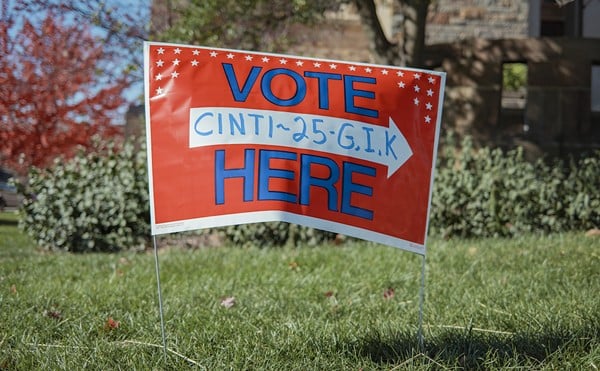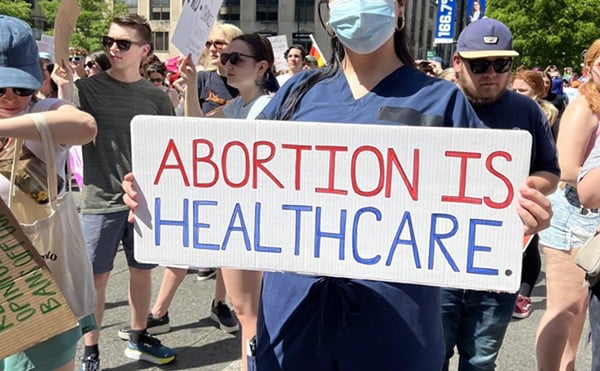The executive summary of the recently released Greater Cincinnati Metro Region Resource Book (aka the Gallis report) extols the Tristate's future possibilities as "a single, strong, competitive force on the global stage." There's just one thing holding us back from our collective destiny, the report concludes:
"A sense of complacency, characterized by an attitude that everything is just fine, can block such dynamic movement."
No shit, Sherlock. But what Michael Gallis, the urban planner hired to prepare the report, might not understand is that complacency hangs in our air heavier than summer humidity. Complacency is swabbed on Cincinnati babies when they're born. Complacency is our defining civic characteristic.
Complacency has shaped Cincinnati into the bland, homogenized, timid metropolis it is. It's created a terrible situation with public education, which is literally falling apart at the seams in the city. It feeds a climate of intolerance for anyone or anything out of the mainstream, which keeps Cincinnati one of the country's most segregated cities and one of the few cities that will not extend legal protection to gays.
Complacency allows the Republican Party and its supporters in local corporate executive suites to maintain a stranglehold on Hamilton County politics. It allowed the 31-year-old son of a local real estate developer who had never before held elective office to be appointed county commissioner, cast the tie-breaking vote for the largest redevelopment project in Cincinnati history and then run as an incumbent and win "re-election."
Complacency helped eight of nine Cincinnati City Council members get re-elected in 1997, despite a shocking collective record of inactivity and self-aggrandizing bickering. It resulted in a 20-percent voter turnout to pass a referendum on changing the way we elect Cincinnati's mayor.
And complacency fosters an atmosphere in which the city's daily newspapers and broadcast media have to do little more than report the weather, sports scores and celebrity gossip. And when they do critical work, they're either vilified (The Enquirer's Chiquita series) or ignored (Channel 9's I-Team investigation of county problems with Paul Brown Stadium construction).
All of which makes the Gallis report's summary warning fairly ironic — since the report was funded by the Metropolitan Growth Alliance, a collection of local banks, foundations, the Greater Cincinnati Chamber of Commerce and corporations like Procter & Gamble, Cinergy, The Enquirer and Scripps Howard (owner of Channel 9 and The Cincinnati Post), who base much of their local influence on maintaining the status quo with the aid of public complacency.
"Once, as a young America began moving west," the Gallis report says, "Cincinnati stood as one of the country's major emerging urban powers. Among its leaders and citizens a mentality and energy prevailed to make, maintain and grow a great city. Where is that mentality and energy today?"
It's been sucked out of our hearts and brains, slathered with a thick layer of complacency, inserted into a small hot dog bun with chili and fed back to us. A good many of our motivated, talented young people — artists, musicians, writers, designers, accountants, truck drivers — eventually leave Cincinnati for "a real city." Others stop caring in order to get through the day. A few keep fighting the good fight.
Luckily, those few sometimes pull together and create a spark in this city. Like the exciting scenes in Northside (subject of last week's CityBeat cover story), Over-the-Rhine's Main Street and Newport's Southgate House. Like the explosion of small theater companies in the area. Like the merry band of grass-roots activists who supported Broadway Commons.
None of those sparks was fanned via a $250,000 plan, the price the Metropolitan Growth Alliance paid for the Gallis report. They were organic, out of the mainstream, beyond the control of the "powers that be."
It's not that the Gallis report is a bad piece of work. It pulls together the area's demographics and strengths in an interesting, colorful manner. It points out the problems and the opportunities. It offers an overview of how transportation, economic development, education, the arts, sports and history fit into the overall image that is Greater Cincinnati.
But, in many ways, it's just another non-specific plan for another group that wants to lead Cincinnati to the promised land. There are already six different groups connected to the business community and the city of Cincinnati working on plans and projects to boost our image for residents and visitors. Why not pour $250,000 into one or more of them?
Then there are the movements that have already shown some measure of success in regional cooperation — the Regional Cultural Alliance and OKI's light-rail proposals. The cultural alliance, well-documented in recent CityBeat coverage, has received funds from numerous cities and counties throughout the Tristate to create a regional framework for financing and promoting the arts. OKI has brought the region's two bus companies together to spearhead efforts at building a 21st-century rail system in Ohio and Kentucky. Why not boost these efforts with $250,000?
Well, those were someone else's ideas, you can hear certain business executives say. We have no control over them.
Never underestimate the need for maintaining the status quo when you're a "leader." And never underestimate the depth of complacency here. ©





